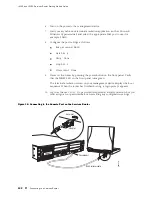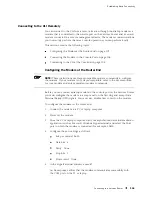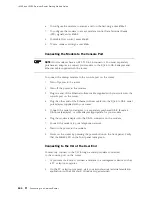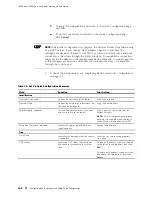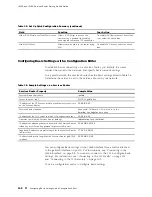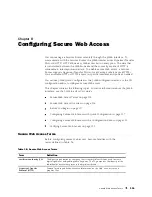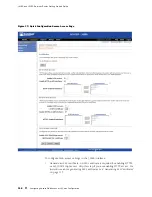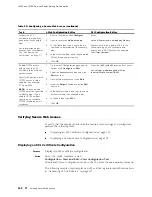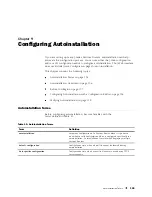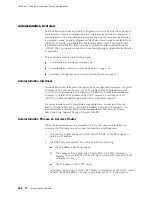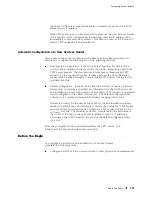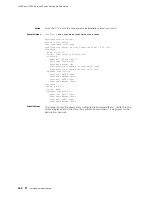
J4350 and J6350 Services Router Getting Started Guide
Table 38: Secure Web Access Terms (continued)
Term
Definition
Hypertext Transfer
Protocol over Secure
Sockets Layer (HTTPS)
Protocol similar to HTTP with an added encryption layer that encrypts and decrypts
user page requests and pages that are returned by a Web server. HTTPS is used for
secure communication, such as payment transactions.
Privacy-Enhanced Mail
(PEM)
Technique for securely exchanging electronic mail over a public medium. PEM is
based upon public key infrastructure (PKI) standards like X.509 certificates. SSL
certificates are partly based on PEM and end in the suffix
.pem
.
RSA
Public key cipher that can be used for encrypting messages and making digital
signatures. RSA uses a well-known encryption and authentication algorithm that is a
part of popular Web browsers.
Secure Sockets Layer (SSL)
Protocol that encrypts security information before transmitting data across a network.
SSL requires two keys to encrypt data—a public key known to everyone and a private
or secret key known only to the recipient of the message—and an authentication
certificate. Most popular Web browsers support SSL.
SSL certificate
Secure electronic identifier conforming to the X.509 standard, definitively identifying
an individual, system, company, or organization. In addition to identification data,
the digital certificate contains a serial number, a copy of the certificate holder’s
public key, the identity and digital signature of the issuing certificate authority (CA),
and an expiration date.
Secure Web Access Overview
A Services Router uses the Secure Sockets Layer (SSL) protocol to provide secure
management of Services Routers through the Web interface. SSL uses public-private
key technology that requires a paired private key and an authentication certificate
for providing the SSL service. SSL encrypts communication between your router
and the Web browser with a session key negotiated by the SSL server certificate.
An SSL certificate includes identifying information such as a public key and
a signature made by a certificate authority (CA). When you access the router
through HTTPS, an SSL handshake authenticates the server and the client and
begins a secure session. If the information does not match or the certificate
has expired, you are not able to access the router through HTTPS.
Without SSL encryption, communication between your router and the
browser is sent in the open and can be intercepted. We recommend that
you enable HTTPS access on your WAN interfaces.
On J-series Services Routers, HTTP access is enabled by default on the
built-in management interfaces. By default, HTTPS access is supported
on any interface with an SSL server certificate.
116
Secure Web Access Overview
Summary of Contents for J4350
Page 14: ...J4350 and J6350 Services Router Getting Started Guide xiv Table of Contents...
Page 22: ...2 J series Overview...
Page 68: ...J4350 and J6350 Services Router Getting Started Guide 48 Field Replaceable PIMs...
Page 75: ...Services Router User Interface Overview Figure 25 J Web Layout Using the J Web Interface 55...
Page 88: ...J4350 and J6350 Services Router Getting Started Guide 68 Using the Command Line Interface...
Page 90: ...70 Installing a Services Router...
Page 100: ...J4350 and J6350 Services Router Getting Started Guide 80 Site Preparation Checklist...
Page 112: ...J4350 and J6350 Services Router Getting Started Guide 92 Powering a Services Router On and Off...
Page 144: ...J4350 and J6350 Services Router Getting Started Guide 124 Verifying Secure Web Access...
Page 162: ...142 Maintaining Services Router Hardware...
Page 194: ...J4350 and J6350 Services Router Getting Started Guide 174 Troubleshooting Hardware Components...
Page 204: ...184 J series Requirements and Specifications...
Page 220: ...J4350 and J6350 Services Router Getting Started Guide 200 ISDN RJ 45 Connector Pinout...
Page 267: ...Part 5 Index Index 247...
Page 268: ...248 Index...

